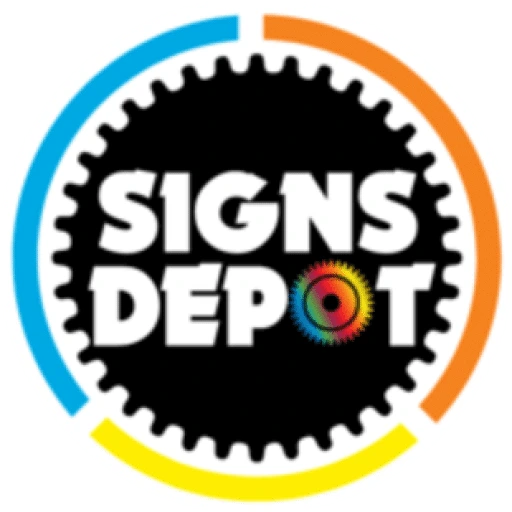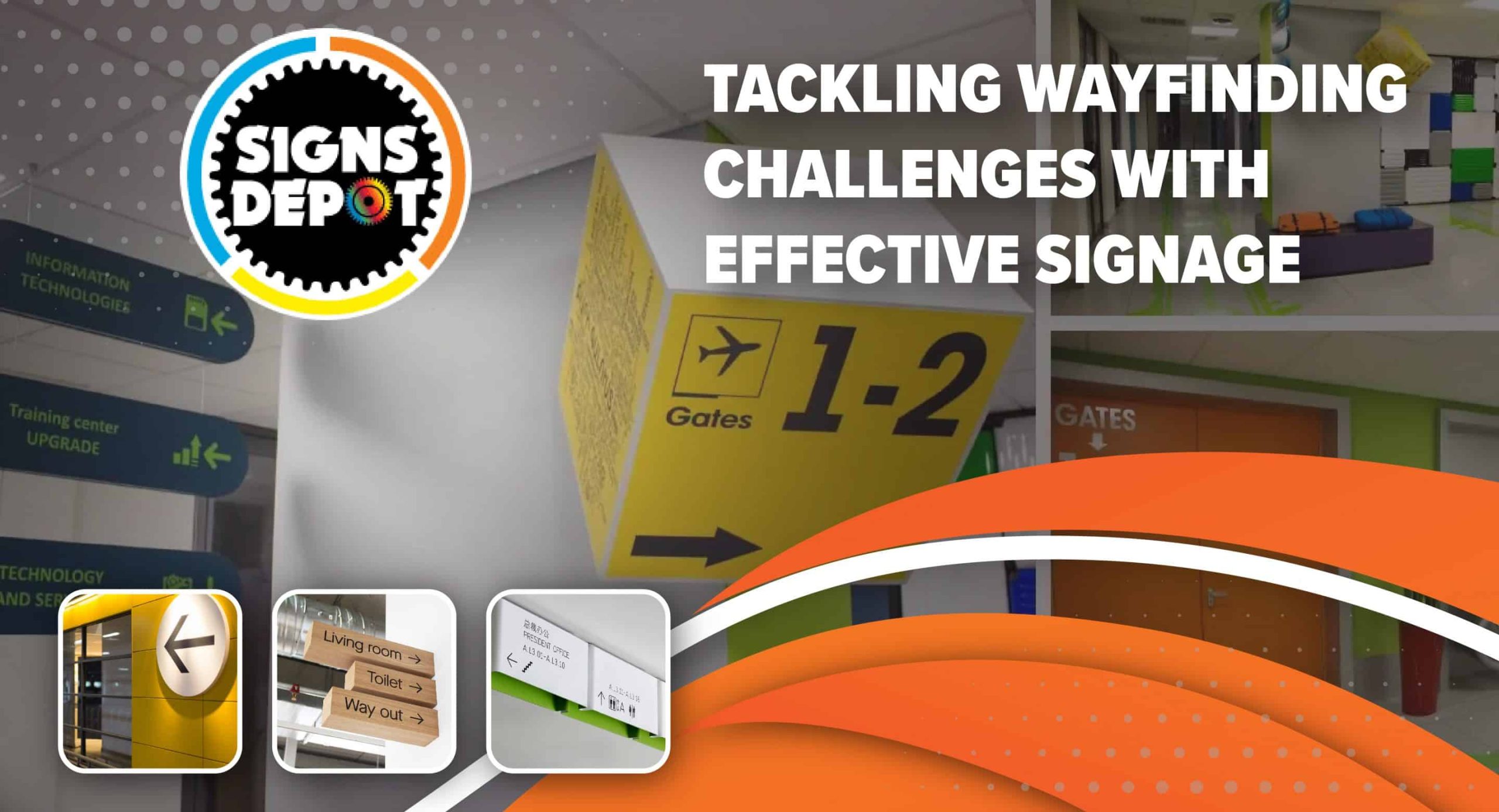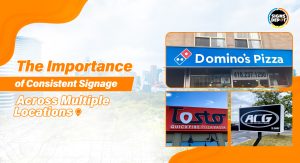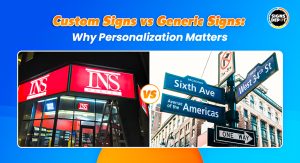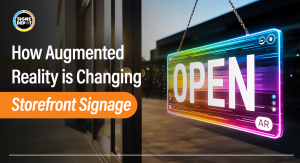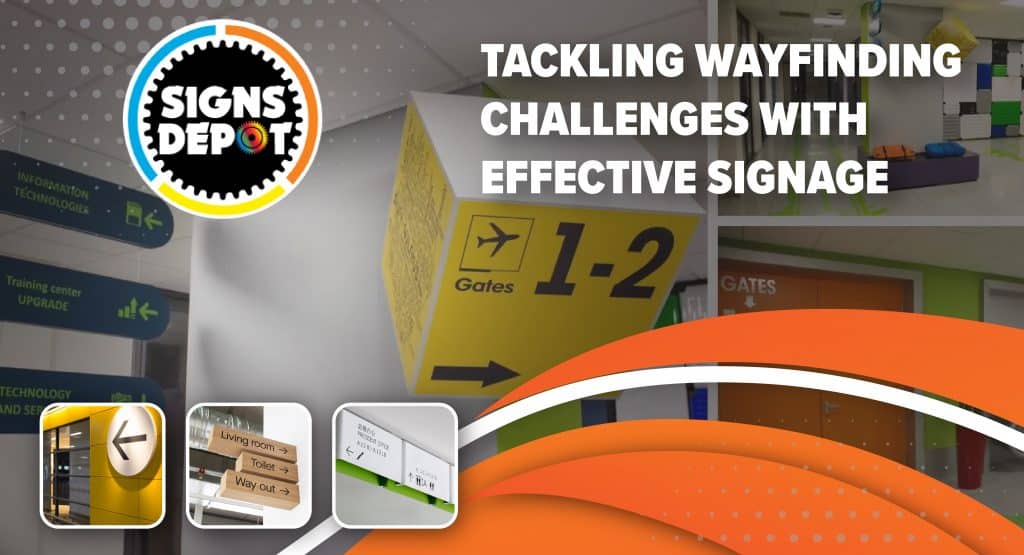

Introduction:
In a world of bustling cities, sprawling campuses, and labyrinthine structures, the requirement for effective navigation is essential. Whether mapping out an unfamiliar cityscape, traversing a massive hospital, or simply trying to locate your gate at a buzzing airport, the art of wayfinding signage comes to your salvage. In exploring the often-overlooked but indispensable world of wayfinding, we unravel the intricacies of signage design, delve into the psychology of navigation, and understand how these unassuming markers frame our spatial experiences.
Navigating through the vivacious city of Mississauga becomes a seamless and pleasant experience with thoughtfully designed wayfinding signs. Do you want to uplift the user experience, improve navigation, and strengthen your brand presence in the local market with customized wayfinding signs in Mississauga?
Get in touch with Signs Depot, the best sign company in Mississauga. Let us help you create a signage solution that leaves an ever-lasting impression.
Here, we set sail on a journey to decode the language of wayfinding signage and discover its insightful impact on our ability to traverse space with poise and precision.
Exploring the Vital Role of Wayfinding and Signage Strategy
Wayfinding and signage are the most important units in the world. They save time and reduce the stress of reaching new locations associated with crossing unfamiliar settings. They have social, economic, substantial health, and environmental influence on both individuals and organizations. Implementing well-designed solutions that turn complex environments into ease is essential. It can be seen throughout buildings, roads, outdoor pedestrians, and cyclist routes.
There is a constant need for legible and suitable informational signage capable of visually directing people through unfamiliar settings with ongoing development plans to urbanize our neighborhoods and fulfil the needs of diverse communities.
It’s always important to consider the following sections while preparing your wayfinding and signage strategy:
It influences branding and shapes user experience: Finding a way from one location to another could be daunting for many, but wayfinding signs efficiently tackle this problem. Crafting custom sign strategies for such scenarios requires a deep understanding of the human experience and the specific needs of individual users. This approach ensures the creation of an optimal user experience that aligns seamlessly with the architectural objectives of the given space.
Know more about custom signs: Maximize Your Brand’s Visibility with Custom Signs
Executing the process involves a comprehensive approach, encompassing planning and research on user groups to understand their dynamics within a given location. Simultaneously, considerations must be made for council and legal requirements that might impact the execution phase. The strategic application of wayfinding and signage design, guided by the principles of wayfinding, is pivotal during execution.
The use of wayfinding and signage provides significant opportunities to convey brand characteristics to the community. By incorporating elements such as color, secondary language, and type, one can effectively highlight the brand’s distinctive character. As a result, signage not only acts as a marketing tool but also contributes to an enhanced user experience, fostering connections for those in need of communication with a specific company or location.
Prioritize design for accessibility:
The development of a wayfinding strategy necessitates a focus on accessibility, with particular attention to the needs of individuals with vision impairments. Spatial signals must prioritize readability and intelligibility to ensure that they do not create barriers, thereby assisting in the discovery and use of environmental information. This emphasis on visual accessibility, initially geared towards those with disabilities, is progressively influencing the practices of all signage developers.
Signage solutions must be situated in certain positions, angles, scales and heights to make wayfinding accessible and allow users to get access to the information.
Steer clear of freestanding signs as they pose obstacles. The reason behind it may not be optimal for sighted people to visually access signage for the disabled.
Wayfinding Challenges:
Wayfinding is an issue in hospitals, airports, and office buildings. Wayfinding difficulties are associated with negative psychological consequences. In addition, wayfinding has attracted the attention of scholars and decision-makers. After several research studies, four broad domains were identified.
(1) Wayfinding cognition
(2) Wayfinding behaviour
(3) Individual and group differences
(4) Environmental factors
These are used as a framework to organize the findings, and the review shows that the sub-domains are more thoroughly addressed in the literature. It can deepen the field’s understanding of factors contributing to interior wayfinding and serve as a resource for decision-makers and designers.
Why everyone should pay attention to wayfinding signage?
Wayfinding signage is crucial due to the universal aversion to getting lost, especially in complex environments like transportation facilities, healthcare settings, and educational campuses. Effectively addressing this concern, wayfinding signage contributes by:
· Ensuring a safer environment
· Directing pedestrian traffic efficiently
· Mitigating crowds and congestion choke points
· Improving customer and visitor experiences
· Establishing brand awareness
· Swiftly familiarizing new visitors with unfamiliar surroundings
What is the future of Wayfinding?
The future of wayfinding will go beyond practicality. With advanced technologies, businesses can focus on fostering rapport with everyone navigating their facilities. Wayfinding should be an experience that efficiently manages staff and effectively engages visitors.
What are the factors affecting wayfinding?
Several research studies have indicated that the complexity of floor plan layouts is a primary factor influencing wayfinding performance. The difficulty of wayfinding can be evaluated by assessing the complexity level.
What are the different wayfinding strategies?
Designers and facility managers can create user-friendly environments by adopting effective techniques which facilitate smooth and intuitive navigation. There are four types of wayfinding signs: identification, directional, informational, and regulations.
What are the characteristics that facilitate wayfinding?
The principles of wayfinding can have seven concepts:
· Sight Lines
· Landmarks
· Paths
· Differing Regions
· Limiting Navigational Choices
· Signs at Decision points
· Identity
Principles for Crafting and Executing Wayfinding Strategies
Design wayfinding signage to be straightforward, conspicuous, comprehensible, and in harmony with local trends. You should consult with an expert sign company in Mississauga that is accustomed to the local wayfinding trends.
The main components of effective wayfinding include:
Exclusive designs
Effectiveness in signage hinges on uniqueness, considering the multitude of visual signals vying for attention. Thus, successful wayfinding signage should possess distinctiveness, making it easily noticeable amid other signs. An illustrative example of a commendable wayfinding design is the unmistakable stop sign.
Adequate Knowledge of Sightlines:
Ensuring a clear view of the environment where signs are situated is crucial for making sure that the signage is easily seen and identifiable by the target audience, free from obstruction by buildings, trees, or competing signs.
Focusing on Decision Points:
The strategic placement of signs at intersections or decision points is imperative. By situating signs at these pivotal locations, users can verify that they are following the correct path to reach a designated destination. Freeway signs serve as a clear illustration, prominently featured along highways or interstates, providing information on distances to cities or exits.
Incorporate Recognizable Landmarks:
Utilizing well-known landmarks serves as a method to aid users in navigating an area without introducing additional artificial signage. Buildings, statues, unique trees, and parks are examples of landmarks that can effectively assist individuals in orienting themselves in a new environment.
Conclusion
Wayfinding signage needs to be clear and terse, and it should not possess any intricate designs that may bemuse the user. A clear example of this design philosophy is transportation signs, including subway schedule signs, freeway exit signs and bus stop signage.
In short, wayfinding signage is discovered to help individuals make their way to a given location. New visitors can breathe easily and navigate new locations using proper wayfinding signage.
Signs Depot’s wayfinding signs in Mississauga stand out as examples of productive communication, confirming that individuals can smoothly wander their adjoining areas. Whether indoors or outdoors, our wayfinding signs are designed to withstand the elements while maintaining their visual impact. For more details, please check our website.
Faqs
How can I implement effective wayfinding signage in my space?
You should consult signage experts at Signs Depot. Our professionals will create a customized signage plan after reviewing your space and understanding navigation needs. From design to installation, we will efficiently address specific wayfinding challenges in your environment.
Can effective signage contribute to positive brand perception?
Companies that invest good amounts in well-designed wayfinding signs portray a commitment to customer experience and professionalism, positively impacting brand perception.
